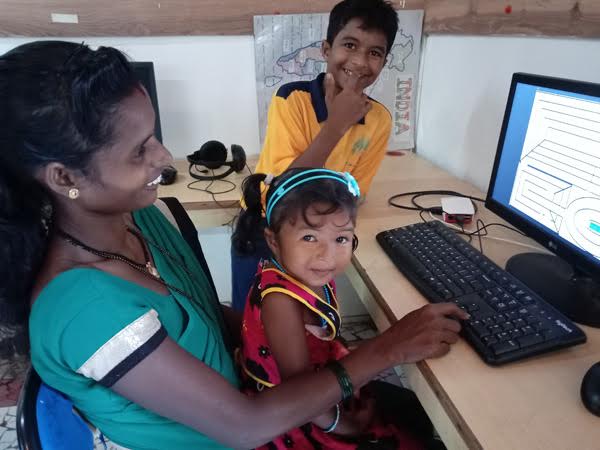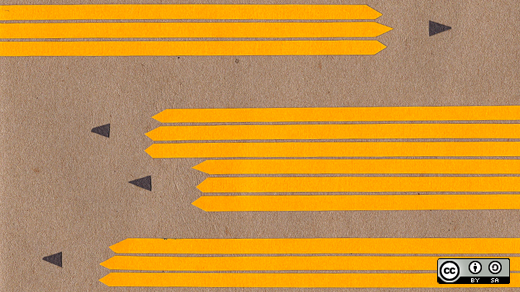Located in a sleepy village just two hours away from the bustling metropolis of Mumbai is a school that defies traditional educational models by collaboratively owning, building, and sharing knowledge and technology. The school uses only open source software and hardware in its approach to learning, and takes pride in the fact that none of its students have used or even seen proprietary software, including the ubiquitous Windows operating system.
The Tamarind Tree School, located in Dahanu Taluka, Maharashtra, India, is an experiment in open education. Open education is a philosophy about how people produce, share, and build on knowledge and technology, advocating a world in which education is for social good, and everyone has equal opportunity and access to education, training, and knowledge.

India's Tamarind Tree School embraces an open education approach to learning. (Image credit: Michelle Chawla, License: CC-BY-SA)
Why open education?
The school's founders believe that the commodification and ownership of knowledge is the primary reason for the inequity in access to quality educational resources. While the Internet may have created a proliferation of digital content and learning tools, the relationship between technology creation, knowledge building, access, and ownership remains skewed for most people in society.
The trend toward expensive primary schools in India, copyrights on learning videos, academic journals, and software, “free” educational apps, and the manufacturing of laptops and devices support the idea that knowledge is owned and controlled by a few.
Many people confuse free usage with free access. But freedom such as ownership and collaboration among users is reduced or eliminated when learning communities do not feel empowered to build their own digital devices, set up their own networks, or create their own digital learning tools. As a result, many learners unknowingly become thieves (as seen in the rampant use of pirated software in India) or compromise their fundamental freedom to own and engage with the digital world on their terms. This reality is even more grim in rural India, where disadvantaged communities are denied access or equal opportunity to the digital world.
How do we create a world where everyone enjoys access to quality education? One approach is to fundamentally change the way knowledge and technology are owned and controlled.
The open source movement offers a solution.
Open education is based on the premise that knowledge should be collaboratively built and shared by all. It believes in creating producers and collaborators of knowledge rather than consumers of it.
How we implement open education
Based on these values and philosophies, the Tamarind Tree school has been experimenting with several open source options:
1. Single-board computers
The school has been able to avoid proprietary hardware, thanks to the work of organizations around the world that build single-board computers. A single-board computer (SBC) is a complete computer built on a single circuit board, complete with microprocessor(s), memory, input/output (I/O), and other required features.
The school selected a robust, affordable SBC built by the Raspberry Pi Foundation, and uses it to teach children programming skills and computational thinking. Students at Tamarind Tree enjoy coding and programming using the visual programming tool Scratch on these hardy open source machines.

Students at India's Tamarind Tree School embrace an open education approach to learning.
2. Open source gamified software and open educational resources
The school, which uses only open educational resources (OERs), employs a combination of open digital tools like Gcompris, Tux Math, Tux Paint, Jfraction, and programs from the open source KDE Community to teach English, math, and science in a fun, interactive manner.
3. My Big Campus learning management system
To enable relevant, contextual learning, Tamarind Tree set up its own learning management system, which is hosted on the open source platform Moodle. Students as young as 7 years old can log on to their courses, along with a facilitator, and are guided to different online and offline activities. The system also supports individualized learning. The curriculum hosted at My Big Campus is derived from the National Council of Educational Research and Training in New Delhi. Students enjoy answering quizzes, commenting on images and blogs, creating digital art, and more. Courses are created contextually, grading can be done online, and students can learn at their own pace.
4. E-library
Tamarind Tree also has a facility where any student with a digital device can read books, articles, or news reports from a collection of more than 3,000 resources hosted on the school’s e-library server. The e-library, which is updated continuously, has been set up on the single-board computer and uses the Calibre open source library management system to organize, tag, and upload resources. All books hosted on the server are in the public domain or hold a Creative Commons license.
As students build knowledge by creating and playing their own computer games and participating in other educational activities, teachers can customize course materials to fit the needs of individual learners through digital content and local resources. The school's goal is to establish that knowledge and technology can be entirely built, owned, and controlled by learning communities by using open source educational resources.
Is the future of education open?
Open education can help build a society that can provide free and open access to education and knowledge for all people with a desire to learn. The Tamarind Tree School demonstrates the potential of creating an educational model that believes in the democratization of knowledge.







2 Comments